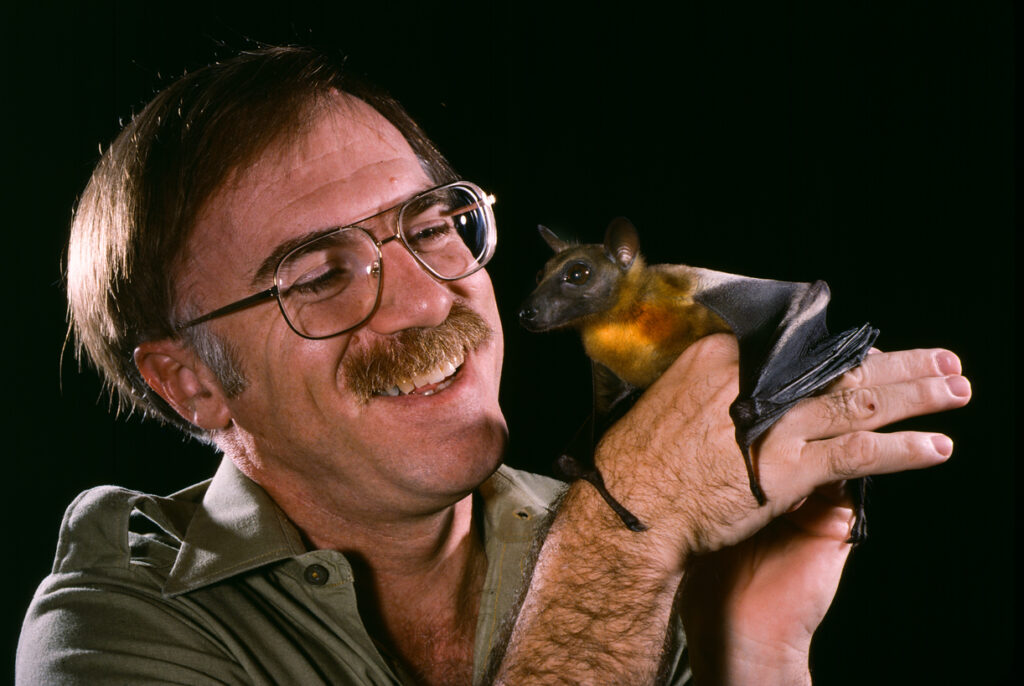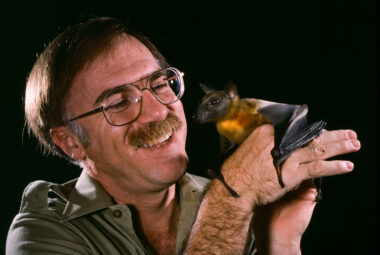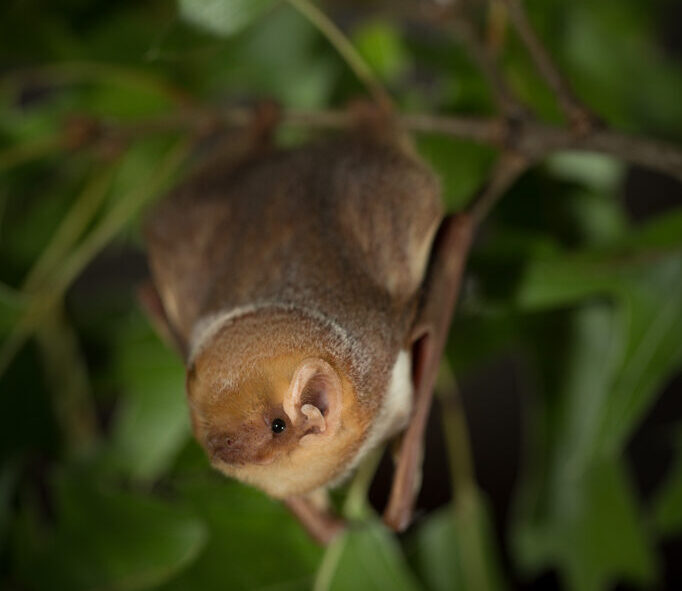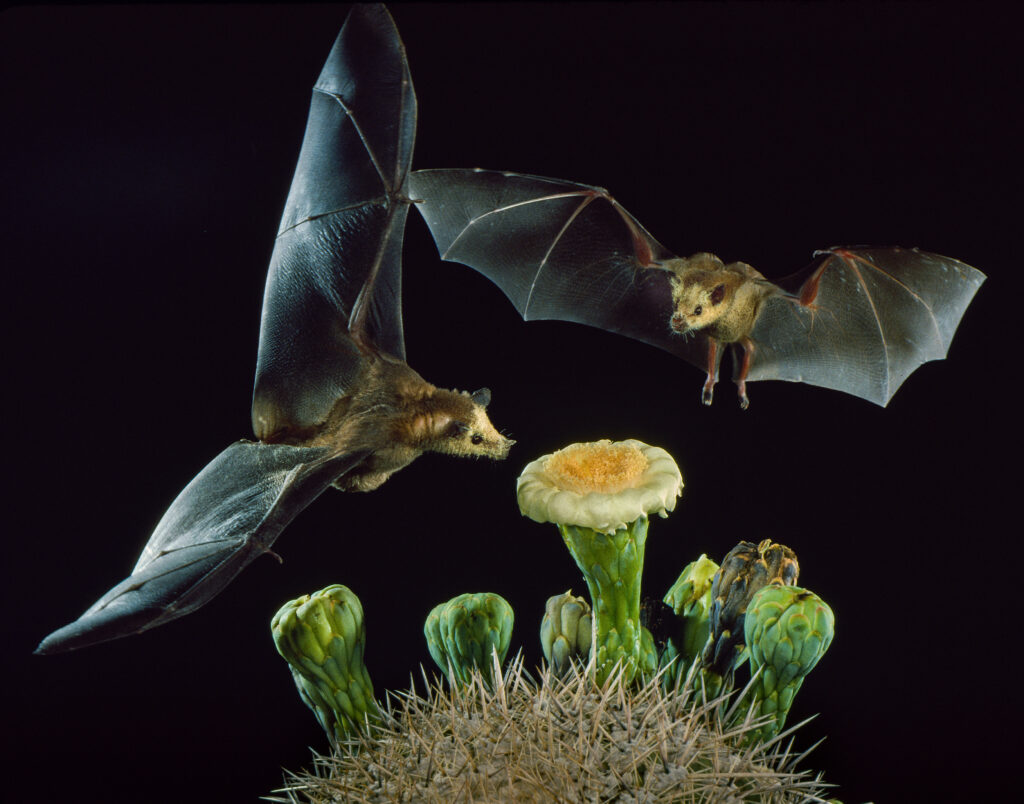With your planned gift to Merlin Tuttle’s Bat Conservation you can make a lasting investment in conserving bats, erasing needless fear, and securing a healthier future for human beings.
Join the Merlin Tuttle’s Bat Conservation Legacy Endowment by making a planned gift through your will, trust, retirement account, or donation of other assets, which can provide many benefits for you and your family during your lifetime and beyond.

With your planned gift to Merlin Tuttle’s Bat Conservation you can make a lasting investment in conserving bats, erasing needless fear, and securing a healthier future for human beings.
Join the Merlin Tuttle’s Bat Conservation Legacy Endowment by making a planned gift through your will, trust, retirement account, or donation of other assets, which can provide many benefits for you and your family during your lifetime and beyond.

Contact us to learn how you can secure a better future today for yourself, your loved ones, and the bats that enrich us all.
As the founding member of the Merlin Tuttle’s Bat Conservation Legacy Endowment, I am demonstrating my personal commitment through a bequest of my most valuable asset, my collection of over 120,000 photos of bats—the world’s most complete documentation of their diversity, values, and needs.
My dream is to leave an endowed organization that continues my science-based education which prioritizes winning friends over battles. Friendly approaches that emphasize real needs over fundraising popularity are key to lasting success.
I hope you will honor my legacy by partnering in this commitment.

As the founding member of the Merlin Tuttle’s Bat Conservation Legacy Endowment, I am demonstrating my personal commitment through a bequest of my most valuable asset, my collection of over 120,000 photos of bats—the world’s most complete documentation of their diversity, values, and needs.
My dream is to leave an endowed organization that continues my science-based education which prioritizes winning friends over battles. Friendly approaches that emphasize real needs over fundraising popularity are key to lasting success.
I hope you will honor my legacy by partnering in this commitment.



We invite you to use the popular planned giving examples below as a starting point for crafting your own gift. We would be delighted to work with you and your advisor to tailor these opportunities to your specific giving situation and conservation goals.
As with all financial and estate planning, we strongly recommend that you consult with your attorney and/or financial planner to determine the right option for you, your family, and your estate.
Please notify us when you have named MTBC as a beneficiary of a planned gift so we can thank you, make sure we’re following your wishes, and recognize you as a member of the Merlin Tuttle’s Bat Conservation Legacy Endowment.
You can create a bequest by instructing your lawyer to include MTBC as a beneficiary in your will or trust. Sample language can be found in our “Resources for Advisors” below.
A bequest is revocable at any time, and will only be disbursed as part of your estate. This gives you the most control over your assets and a chance to grow your gift along with the rest of your estate.
Benefits can include reduced income taxes for your heir and estate and a reduction in estate tax liability.
This is an excellent option if you want to defer a gift until after your lifetime or want to leave a more significant gift.
To donate your Retirement Plan Assets, simply name MTBC as the beneficiary of your retirement plan. Your plan administrator will be able to help you fill out the proper forms.
Benefits can include reduced income and estate tax liability.
This is an excellent option if you want to make a Qualified Charitable Distribution, reduce your estate’s tax liability, or leave more of your estate to your heirs.
A Charitable Gift Annuity is a win-win for you and for MTBC. In exchange for a sizable gift to MTBC of cash, securities, or other assets, you (or a beneficiary of your choice) will receive a fixed, regular payout for the rest of your life with funds from the investment of that gift. At the end of your life (as well as your spouse’s life if giving as a couple), MTBC will receive the remainder of the original gift and any return accrued.
Benefits can include immediate tax savings and avoidance of capital gains taxes if donating an appreciated security.
This is an excellent option if you want to supplement your income with steady payments while leaving a larger gift for MTBC in the future.
A Charitable Remainder Trust is an irrevocable trust that provides a steady income stream for you or a beneficiary for a set term. Once that term is completed, MTBC will receive the remainder of the amount in the trust.
Benefits can include a partially tax-deductible donation.
This is an excellent option if you want to retain an income for yourself or a loved one, while still meeting your charitable goals.
A Charitable Lead Trust is an irrevocable trust that provides a steady income stream for MTBC for a set term. Once that term is completed, you or your beneficiary will receive the remainder of the amount in the trust.
Benefits can include a reduction in estate and gift tax liability.
This is an excellent option if you want to reduce your taxable estate and lock in the taxable value of growing assets before they pass to your family.
To donate a Life Insurance Policy, you can create a new policy or donate one that you no longer need. Simply name MTBC as the beneficiary of your policy.
This is an excellent option if you want to make a significant gift to MTBC but don’t want to draw funds from your estate.
Donate property by deed directly to MTBC or sell it to us at below market value to make use of an unneeded asset and support our mission for years to come.
Benefits can include reduction or elimination of capital gains tax, income tax deductions, and elimination of maintenance costs, property taxes, and insurance premiums.
This is an excellent option if you’d like to reduce a variety of expenses, or want to make a non-cash or securities donation.
Funds raised through planned giving will support the most urgent needs of bat conservation for years to come. Below are some of the needs that we have identified as the most urgent and critical to long-term success. If you have a specific vision for how your funds should be used, please contact us so that we can honor your wishes.
A single large cave can shelter millions of bats. Nevertheless, most bats were evicted long ago due to human use. Protection and restoration of key roosting caves is now vital to conservation success. Merlin’s 60 years of photographically documented successes and failures provide invaluable guidance uniquely shared through our website resources and periodic workshops.
Requirements vary greatly among species, and even within species that rely on strikingly different conditions for hibernation versus rearing young. Protective gates that are ideal in one situation can be disastrous in another.
Many populations of endangered cave-dwelling bats cannot be rebuilt until appropriate conditions are restored. Merlin’s long-advocated methods have proven effective in restoring millions of bats, including the once critically endangered gray bat. Recent research has confirmed the effectiveness of his methods in restoring white-nose syndrome losses.
In our planned video series Merlin will share highlights from his 60-year legacy of unprecedented progress conserving historically unpopular animals. Each video will address unique elements of his success. Captivating stories will be told from original locations supplemented with historic photos, and videos. The series’ goal is to inspire hope for the future by preparing others to tackle challenges perceived to be impossible.
The first video, Saved from Predicted Extinction, has already been scripted. This 15-minute video will tell the story of how millions of endangered gray bats were restored following 1969 predictions of their extinction. It powerfully illustrates Merlin Tuttle’s science-based, “win friends, not battles” approach that united diverse groups, and turned the bat’s biggest threats into their staunchest allies. If more broadly followed, Merlin believes that this model could lead to surprisingly rapid recovery of other critically endangered species.
Subsequent videos in the series will range 5-10 minutes in length including titles such as Overcoming Fear, Finding my Passion, Academic Challenges, Turning Obstacles to Opportunities, Winning Friends Instead of Battles, Rule Breaking that Pays, and Rewards Worth Living For.
Student scholarships are unsurpassed in their contributions to bat conservation. Most of the world’s more than 1400 species remain unstudied beyond taxonomic descriptions. Research to document their vital ecological and economic roles and put people’s superstitious fears in perspective is urgently needed to reverse alarming decline.
The power of scholarships is well documented. Students prefer research essential to an improved future, but frequently are forced into alternative careers for lack of funds. Furthermore, because thesis research can be key to subsequent employment opportunities, students are strongly motivated for extraordinarily cost-effective accomplishment.
Awareness that bats save U.S. farmers nearly $23 billion annually began with research grants and scholarships awarded through Merlin Tuttle’s personal efforts. In fact, much of what is known of the vital roles of bats in pest control, seed dispersal, and pollination, has come from scholarships initiated by Merlin. With lessons learned from his proven track record, we are prepared to maximize returns on these investments.
Understanding the vital contributions of bats is essential. Donor-named scholarships are encouraged.
For decades, workshops designed by Merlin Tuttle have played a key role in training hundreds of biologists and conservationists in the specialized techniques required for study and conservation of bats. Our annual workshops continue to provide essential training and local advice at national and international locations of special need.
We minimize workshop costs to keep them affordable for young professionals and others who most need them. Participants learn crucial skills in bat identification, capture, photography, and acoustic sampling from colleagues, trained by Merlin over the past decade, who are now extraordinarily talented instructors that increasingly co-lead our workshops. These instructors are extremely generous, but must be reimbursed for their time, air travel, and transport of equipment.
Ultra-fine monofilament mist nets and harp traps are essential for capture of many bat species. Additionally, some bats cannot be captured at ground level. For these, a “triple-high” setup of extendable poles and pulley systems is used to raise nets up to 30 feet above ground. Nets seldom last beyond a single workshop. And radio transmitters, designed to fall off after leading participants to roosts and feeding areas, often cannot be retrieved.
Industrial agriculture is increasingly reliant on toxic chemicals that threaten nearly every aspect of environmental and human health. Bats and other natural predators of costly insect pests have declined alarmingly in recent decades, leaving us increasingly dependent on dangerous, ineffective alternatives.
Since the introduction of pesticides, crop losses have nearly doubled, despite a 10-fold increase in pesticide use. Today, we use a billion pounds annually in the U.S. alone. The United Nations Environmental Program has ranked insect pest resistance to pesticides as one of the world’s top four environmental problems. And hundreds of studies have linked pesticides to cancer, Parkinson, Alzheimer, multiple sclerosis, cardiovascular and kidney disease, birth defects, and kidney disorders.
Studies worldwide have documented bats as key predators of many costly pests. Even at greatly reduced numbers, bats still save American farmers nearly 23 billion dollars annually in reduced pesticide use. But with help bats can do much more.
Artificial roosts, often referred to as bat houses, were introduced in America nearly 40 years ago by Merlin Tuttle. He is now training staff in the latest innovations. Under Merlin’s guidance, we are partnering with leading farmers, orchardists, and agricultural institutions to improve bat house designs and develop ways to attract more bats where they are most needed. We are also sponsoring state-of-the-art research, using the newest genetic analyses to confirm and measure impacts of bat predation on insect populations. Such pioneering work is vital in reducing our addiction to pesticides.
Austin’s spectacular bat flights are globally famous because Merlin Tuttle convinced the city to protect its bats. In the early 1980s, health officials had mistakenly warned that most were rabid and aggressive, and frightened citizens were signing petitions demanding eradication. Instead, Merlin convinced the city to protect its bats as a goldmine of opportunity.
As he promised, no one has been attacked or harmed. The 1.5 million bats now attract millions of tourist dollars annually, consume tons of insect pests nightly, and illustrate the benefits of living in harmony with nature. Americans have gone from poisoning bats to putting up bat houses to attract more.
Merlin now dreams of expanding such success worldwide through his education center. He also hopes to inspire future generations to address additional, apparently impossible challenges by “winning friends, not battles.” To this end, he has bequeathed his priceless collection of over 100,000 National Geographic quality photos, and relevant resources, to Merlin Tuttle’s Bat Conservation to provide a firm foundation for a World Center for Bat Education in Austin.
Merlin’s photos span a more than 60-year career. And they document the amazing diversity and sophistication of bats as small as bumblebees, as large as eagles, as cute as pandas, and as strange as dinosaurs. They also demonstrate billions of dollars of contributions to human economies. His story of bats and the power of friendly persuasion must be told!
Bats rank among the world’s most endangered animals and loss of suitable homes is a leading cause of decline. Prior to the advent of modern humans, millions of bats relied on the plentiful cavities found in old-growth forests. Few of these once abundant roosts remain. Homeless bats either perish or seek shelter in buildings where they are often exterminated.
To address this crisis, Merlin Tuttle introduced bat houses to America in 1982 and has led research to improve such accommodations for more than 40 years. Hundreds of thousands of bats have survived thanks to the many Americans who are now providing bat houses. In collaboration with our unsurpassed network of colleagues and volunteers, we are constantly making and sharing new discoveries that are greatly improving success.

Legal name: Merlin Tuttle’s Bat Conservation, Inc.
Legal address: 5000 Mission Oaks Blvd. #41, Austin, TX 78735
Federal tax ID number: 46-5077536
Sample unrestricted Bequest language: “I give and bequeath to Merlin Tuttle’s Bat Conservation, Inc, 5000 Mission Oaks Blvd. #41, Austin, TX 78735 [the sum of ________ Dollars ($______)][% of the rest, residue and remainder of my estate], to be used for its general charitable purposes.”
Please feel free to contact us with any questions you have about planned giving. We can review your needs and goals, and together with your own financial and legal advisors, help you find ways to support Merlin Tuttle’s Bat Conservation mission while ensuring your family’s financial security. We look forward to hearing from you!
MTBC is proud to be transparent and efficient with donations. Merlin often quips, “MTBC offers the biggest bang for your conservation buck.”
Read more about us, or view our financial information, including our latest financial statements and 501(c)(3) information.
You will never receive high-pressure phone calls or mass mailings from us, or have your name traded or sold.
For more information, or if you have any additional questions, please contact Duncan Hicks, our Operations Manager.
2024 © Merlin Tuttle’s Bat Conservation. All rights reserved.
Madelline Mathis has a degree in environmental studies from Rollins College and a passion for wildlife conservation. She is an outstanding nature photographer who has worked extensively with Merlin and other MTBC staff studying and photographing bats in Mozambique, Cuba, Costa Rica, and Texas. Following college graduation, she was employed as an environmental specialist for the Florida Department of Environmental Protection. She subsequently founded the Florida chapter of the International DarkSky Association and currently serves on the board of DarkSky Texas. She also serves on the board of Houston Wilderness and was appointed to the Austin Water Resource Community Planning Task Force.
Michael Lazari Karapetian has over twenty years of investment management experience. He has a degree in business management, is a certified NBA agent, and gained early experience as a money manager for the Bank of America where he established model portfolios for high-net-worth clients. In 2003 he founded Lazari Capital Management, Inc. and Lazari Asset Management, Inc. He is President and CIO of both and manages over a half a billion in assets. In his personal time he champions philanthropic causes. He serves on the board of Moravian College and has a strong affinity for wildlife, both funding and volunteering on behalf of endangered species.